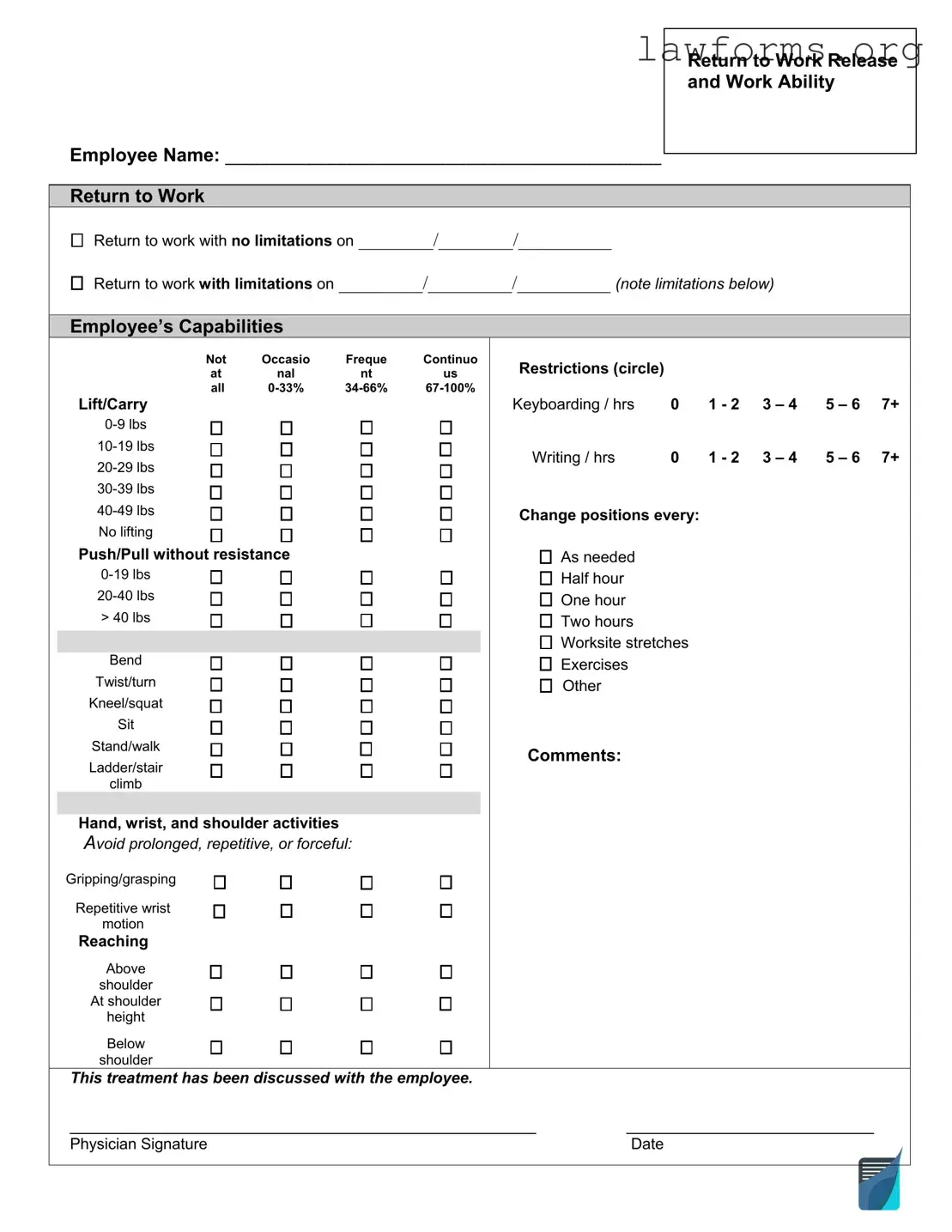Fill Out a Valid Work Release Template
The Work Release form is a legal document that allows individuals to participate in work-related activities while serving a sentence or awaiting trial. This form is essential for securing permission from the court or correctional facility, ensuring that individuals can maintain employment and support themselves or their families. To get started, fill out the form by clicking the button below.
Customize Document Online

